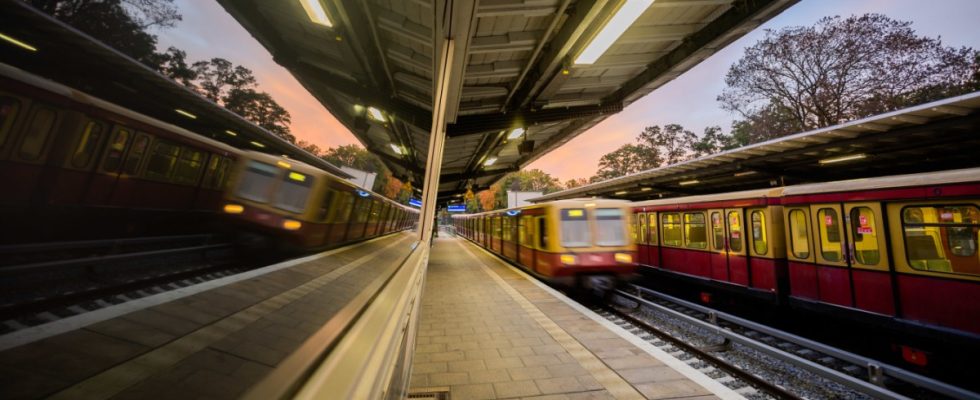What you haven’t seen in the Berlin S-Bahn: Skateboarders, bicycle gangs, baby carriages, here and there a bed frame or a table, stacked moving boxes on sack trucks. You can see suppliers who, with their backpacks full of food orders, heave their e-bikes from the platform into the carriage.
What you haven’t seen before: Euro pallets full of crates of drinks, large packages or trolleys with refrigerated food. But that could change now. Manja Schreiner, who has been Berlin’s transport senator since April, had the “City-Rail-Logistics” feasibility study evaluated whether and how goods could be transported on the S-Bahn. “The idea of using the S-Bahn to transport goods in Berlin is still a vision,” says Schreiner, who is also responsible for climate and the environment in Berlin. Such innovations are needed, she says, “to meet the challenges of climate protection”. Nothing is more efficient than using existing infrastructure.
In principle, three possibilities are conceivable. One provides for separate wagons only for transport, but that is not feasible, the study authors judged. It would take too long to connect and disconnect them. Second idea: pure freight S-Bahn without passengers, which could be packed with 13 truckloads at the S-Bahn terminus Spandau, Ahrensfelde or Königs Wusterhausen. This is expensive and also difficult to do, according to the verdict.
Smaller conversion measures would be necessary in the third scenario if people and goods were transported together, in the multi-purpose area or in wagons that were closed to people. At the stations, the containers on wheels are supposed to be wheeled in and out of the trains, all within 30 seconds. The goods are then transported to their destination with the cargo bike, for example smaller packages with machine parts or screws. But anyone who has ever driven into Berlin Friedrichstrasse on the S5 at eight in the morning knows that there is not much room to breathe. So Schreiner would need more trips and more trains.
The senator makes it clear: “Of course, passenger transport still has priority.” And she doesn’t want to keep it waiting: Berlin’s S-Bahn trains, together with Hamburg’s trains, are the most punctual in Germany: 97.3 percent on time – which Munich can only dream of, with a punctuality rate of just 87.6 percent.
Retail companies have expressed an interest in Schreiner, manufacturing and processing companies, logisticians and transport companies. There have already been some attempts in other cities: in Zurich, the tram collects the bulky waste from the residential areas, in Dresden the goods trams only ran through the city for three years. Frankfurt also tested a transport tram.
In principle, Martin Pogatzki from the Pro Bahn Berlin passenger association is in favor of shifting transport from road to rail. But he wonders if the complexity justifies the benefit. “Where should they stop? What should they transport?” All questions that he would like to ask Manja Schreiner in a conversation next week.

